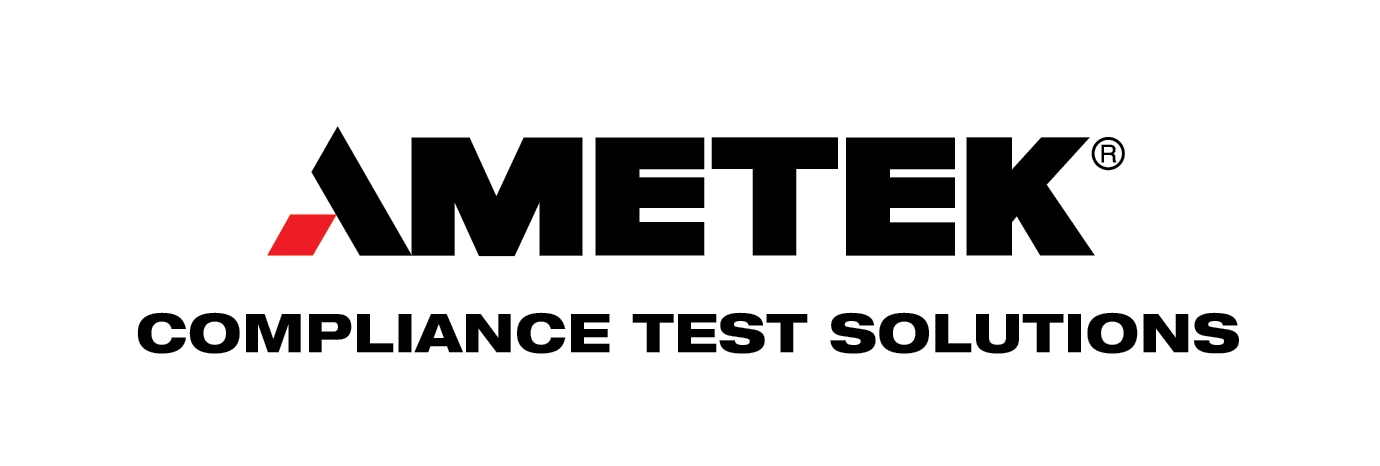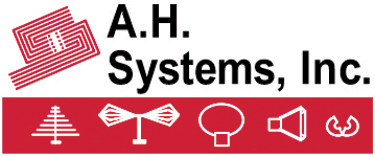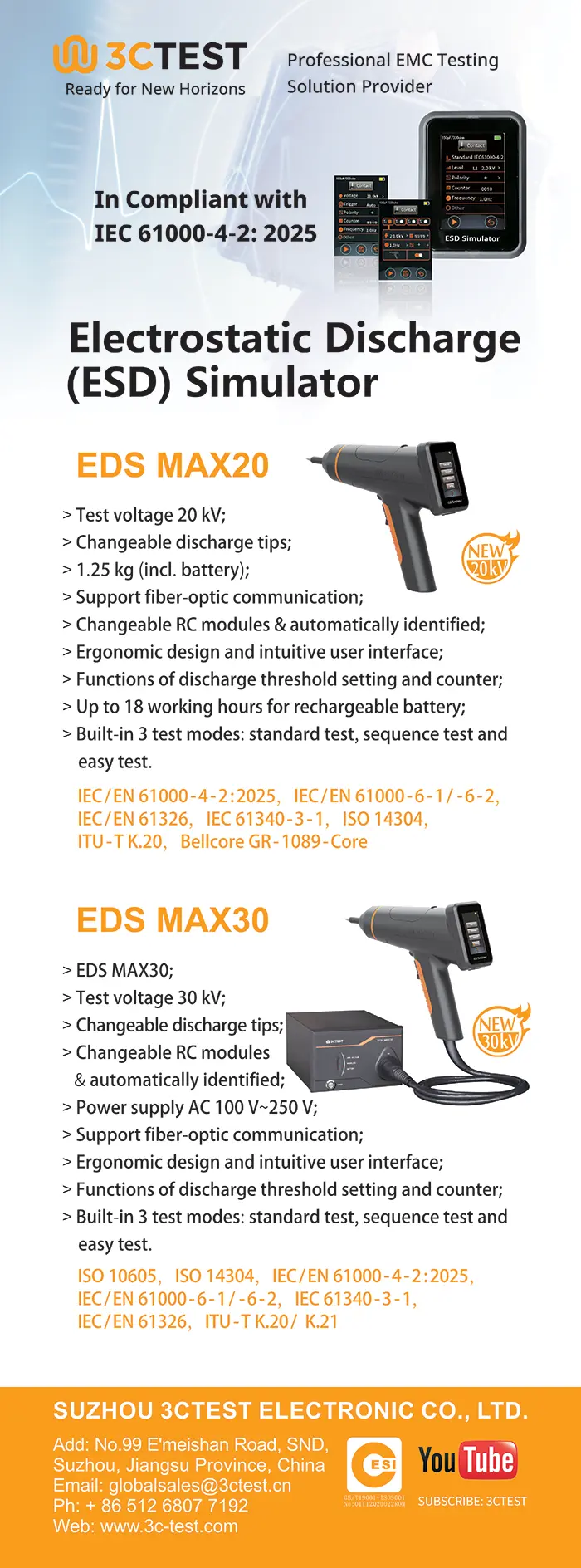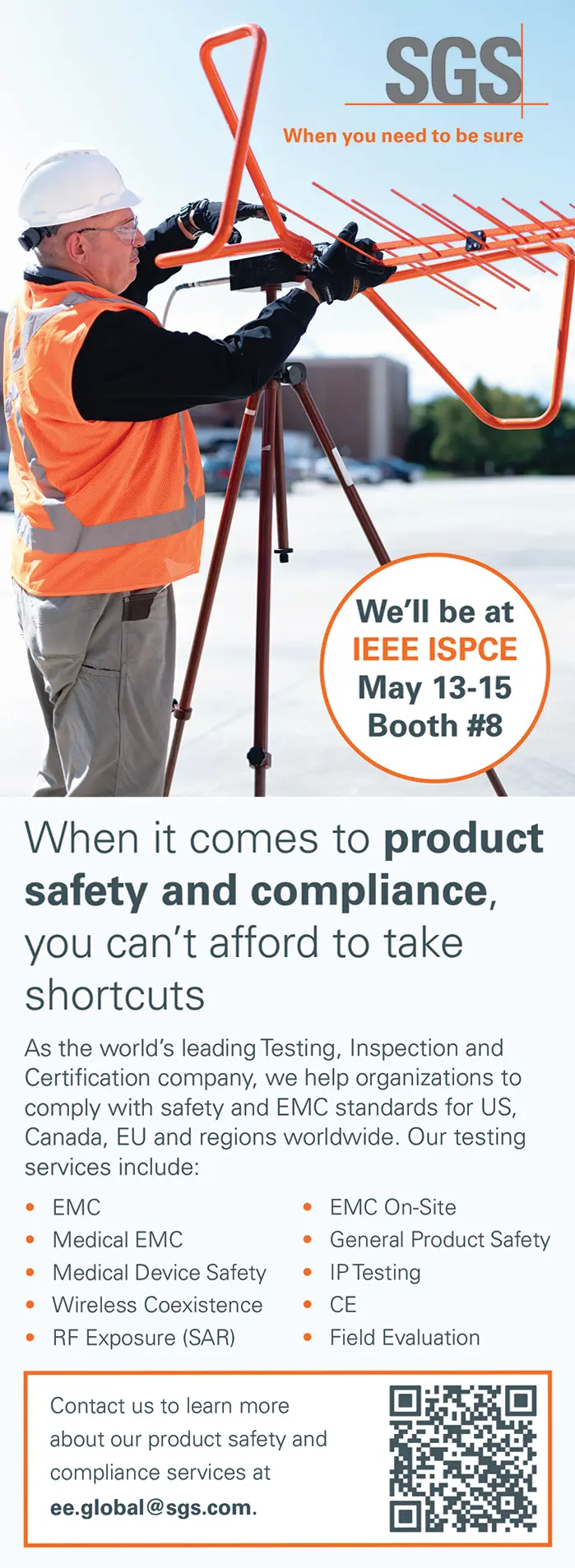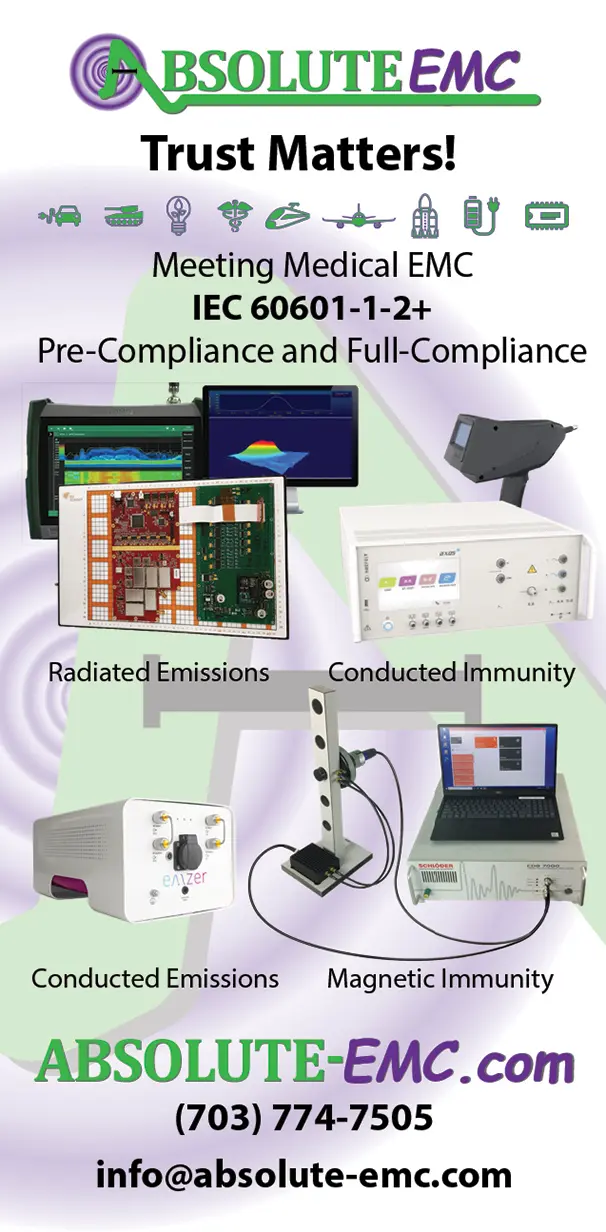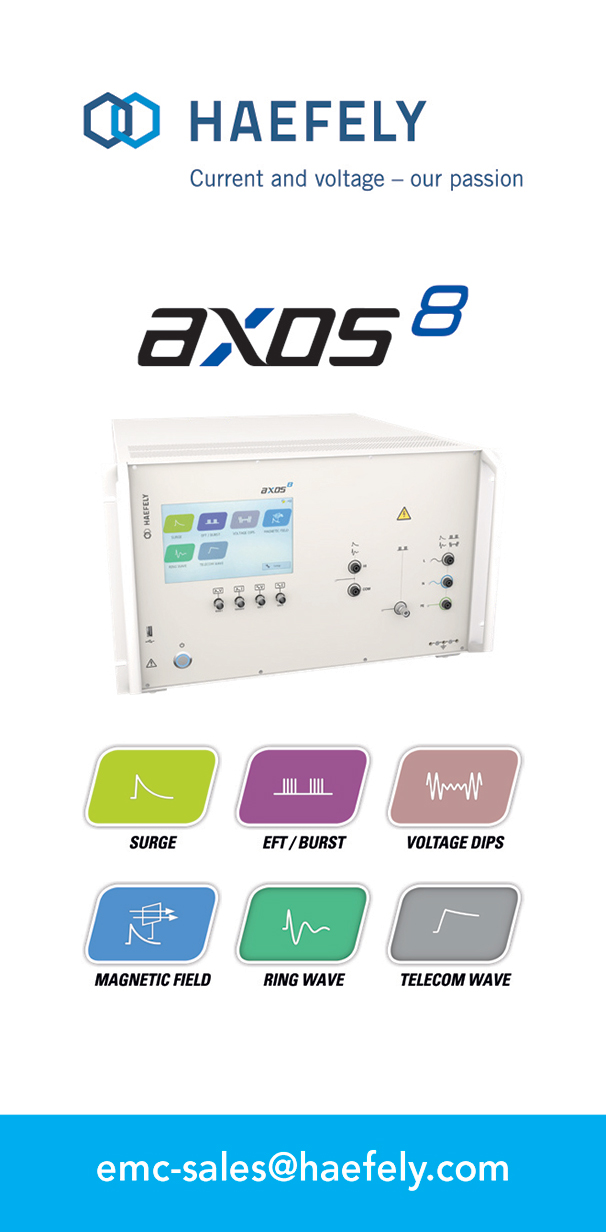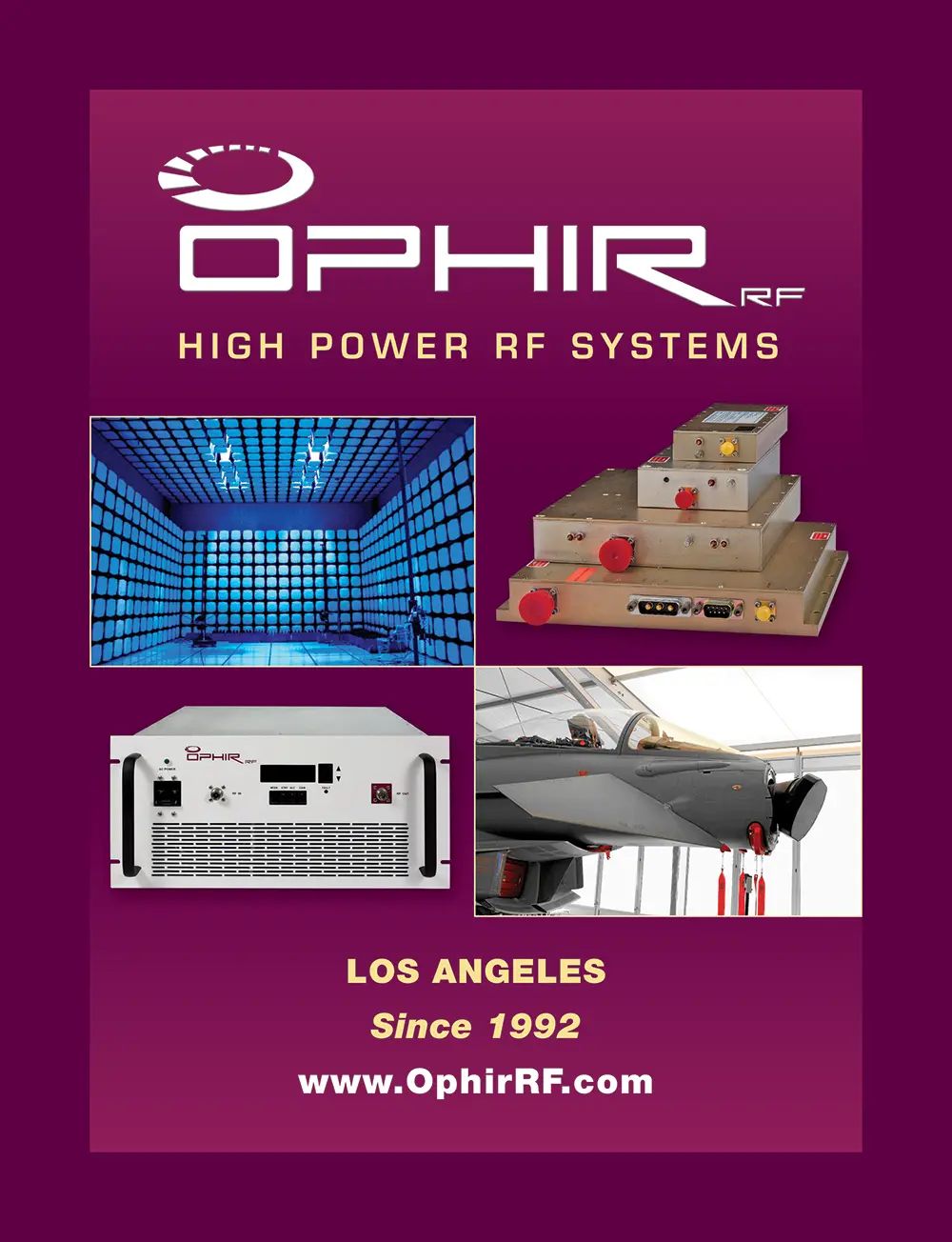
Developing the Dynamic Hazard‑Based Safety Engineering by Introducing the Control-Oriented Model
EMC Concepts Explained
Hot Topics in ESD
Troubleshooting EMI Like A Pro
On Your Mark

Developing the Dynamic Hazard‑Based Safety Engineering by Introducing the Control-Oriented Model
EMC Concepts Explained
Hot Topics in ESD
Troubleshooting EMI Like A Pro
On Your Mark
RF solution will do!
Peace of mind
A fully compliant system from AR includes an engineered design that is guaranteed to meet field strength requirements for the tests. Contact our design team to discuss your requirements and get a custom proposal.




ISSN 1948-8254 (print)
ISSN 1948-8262 (online)
is published by
Same Page Publishing Inc.
451 King Street, #458
Littleton, MA 01460
tel: (978) 486-4684
fax: (978) 486-4691
© Copyright 2025 Same Page Publishing, Inc. all rights reserved
Contents may not be reproduced in any form without the prior consent of the publisher. While every attempt is made to provide accurate information, neither the publisher nor the authors accept any liability for errors or omissions.
editor-in-chief
Please contact our circulation department at circulation@incompliancemag.com
An article posted to the website of JD Supra summarizes a recent FDA investigation of the facility of a California-based medical device manufacturer (Q’Apel Medical, Inc.), during which inspectors identified several concerns regarding a previously cleared medical device. The issues included design modifications and misbranding concerns, each of which required the company to obtain…
According to a press release issued by the Office of FCC Chair Brendan Carr, some of the entities on the Covered List may still be operating within the U.S., in violation of the prohibitions under FCC regulations. The FCC has already sent Letters of Inquiry to each of the listed entities to determine what, if any, further actions are required…

atchdogs have long been a standard, if slightly esoteric, element of system design, often receiving only secondary consideration after the primary application has been planned out. At their core, they serve a straightforward purpose: providing a graceful means of recovery in the event of abnormal system behavior. At their origin, watchdog timer architectures were simple, implemented via a dedicated application-specific integrated circuit (ASIC), positioned adjacent to the system’s processor (see Figure 1).
In that early form, interaction with the watchdog was typically limited to a simple general-purpose input/output (GPIO) pin. However, as systems have grown in complexity and adopted stricter safety requirements, watchdog implementations have also evolved. In more modern setups (see Figure 2), a watchdog may be integrated into the microcontroller itself, reside in a voltage monitor or supervisory device, or be part of a power management integrated circuit (PMIC), often refreshable through GPIO, I2C, or SPI.

hen a recall is implemented, it hopefully solves the safety issue. But that doesn’t always happen. First, you rarely are 100% successful in retrieving the product or repairing it. And, of course, the occurrence of an accident involving a recalled product can be very difficult to defend. Even worse, an accident involving a product that was unsuccessfully repaired by the manufacturer can be even harder to defend.
The number of lawsuits involving recalled products and products that haven’t been recalled has been proliferating recently. And the verdicts and settlements have been significant.
This article will describe the difficulty of defending the adequacy of a recall, the types of remedies that are offered, and a recent trend of class action lawsuits being filed alleging that the remedy instituted by the manufacturer is inadequate and resulted in economic loss to the consumer or owner of the product.
In addition, if a repair is performed and an accident still occurs, that can also cause a jury to get mad and believe that the manufacturer was grossly negligent. In August 2024, a jury rendered a huge award against Harley-Davidson for allegedly failing to adequately repair faulty software on one of its recalled motorcycles. Unfortunately, there was an accident on the repaired motorcycle that resulted in catastrophic injuries and one death. The jury awarded $240 million in punitive damages and $47 million for pain and suffering, medical expenses, and loss of consortium.
Of course, Harley believes that the accident had nothing to do with the original repair and they plan to appeal. The message here is that if you repair or replace the product instead of refunding the purchase price, you had better be confident that the fix or replacement is adequate and that you have good evidence that it is safe.

IEC 62368-1 addresses numerous hazards, including electric shock, mechanical, heat, radiation, chemical, and fire risks. Yet, its current iteration primarily presumes that safety mechanisms are built-in or are physical hardware safeguards, with minimal explicit focus on control-based safety, especially where hazard prevention significantly depends on or is facilitated by software. In the digitalization and Internet of Things (IoT) era, where software increasingly governs devices—including vital safety functions like overtemperature protection, fire prevention, and other types of hazard monitoring and control—this oversight in considering software’s role in safety assurance demands thorough examination [3‑4].
his is the second of two articles devoted to the topic of inductor impedance evaluation from the S parameter measurements using a network analyzer. The previous article [1] described the impedance measurements and calculations from the S11 parameters using the one-port shunt, two-port shunt, and two-port series methods. This article is devoted to the impedance measurements and calculations from the S21 parameters using the two-port shunt and two‑port series methods.
The overall conclusion of the previous article was that the inductor impedance evaluation from the S11 parameter measurements is not accurate. This article concludes that the two-port series method is the most accurate method for the inductor impedance evaluation from S21 parameters when using a network analyzer.
new version of Technical Report TR18.0-01-25 (TR18) on ESD Electronic Design Automation (EDA) Checks by the ESD Association’s Working Group 18 is about to be released. This article provides an overview of TR18, which offers guidelines for the EDA industry and the ESD design community to establish a comprehensive ESD verification flow. This flow addresses ESD design challenges in modern ICs, including common terminology and required check types. The main requirements are broad check coverage, manual checking limitations, transparency, and integration into the design flow for clear and actionable violation reporting. The document covers generic checks, EDA toolsets, and databases, allowing IC design companies, IDMs, or foundries to implement specific rules in their design and verification flows for automated checking.
- Technology Enablement Phase
- Product Definition Phase
- Product Architecture Phase
- Product Design Phase
- Product Verification Sign-off Phase
- Product Validation Phase
ecently, I worked on a radiated emissions case involving narrowband emission failures in the 100 MHz to 1 GHz range. Identifying the source of such narrowband noise is usually straightforward, and, in this case, a near-field sniffing probe quickly led us to the culprit: the clock signal of a high-speed SPI line between the microcontroller and the flash drive on the PCB. This is demonstrated in Figure 1.
However, during troubleshooting, I discovered something unexpected—other I/O lines, much slower by nature (such as an I2C line running at just tens of kHz), were also exhibiting the same 100 MHz harmonics. This became evident when I used an RF current probe to measure common-mode noise on the wires connected to the PCB, shown in Figure 2.
To mitigate the noise on the other I/O lines, I initially used high-impedance ferrite beads. When selecting ferrite beads, a simple rule applies:
- Their impedance should be low enough at the signal’s operating frequency to avoid signal integrity issues and
- Their impedance should be high at the noise frequency to effectively suppress unwanted emissions.
or those that follow our “On Your Mark” columns, you know the emphasis placed on the value of ANSI Z535 – the U.S. standards that create a guide for the design, application, and use of signs, colors, and symbols intended to identify and warn against hazards and for other accident prevention purposes. These standards, along with their international counterpart, ISO 3864-2, are effective starting points in helping you to develop adequate warnings. Recently, we had an exciting new development in this family of standards: the release of an all-new seventh standard. In this article, we’ll explore the new standard and how its principles can be used to create effective warnings that drive safety.
You can do that here.
View Index
 Visit In Compliance’s booth at these events!
Visit In Compliance’s booth at these events! 2025 Chicago IEEE EMC Mini Symposium
2025 Chicago IEEE EMC Mini Symposium
May 8
 EMC Fest 2025
EMC Fest 2025
May 12-16
2025 International ESD Workshop (IEW‑Europe)
May 13-15
 2025 IEEE International Symposium on Product Compliance Engineering (ISPCE)
2025 IEEE International Symposium on Product Compliance Engineering (ISPCE)
May 18-21
2025 International Applied Computational Electromagnetics Society (ACES) Symposium
May 19-21
EMC & Compliance International Exhibition & Workshops
May 19-22
2025 IEEE International Instrumentation and Measurement Technology Conference
2025 Asia-Pacific International Symposium and Exhibition on Electromagnetic Compatibility (APEMC)
May 20
 AMTA 2025 Regional Meeting
AMTA 2025 Regional Meeting
June 3-6
WPTCE 2025IEEE Wireless Power Technology Conference and Expo
June 15-20
 IMS 2025 – IEEE International Microwave Symposium
IMS 2025 – IEEE International Microwave Symposium
June 26
Cybersecurity Maturity Model Certification for Federal Government Procurements



